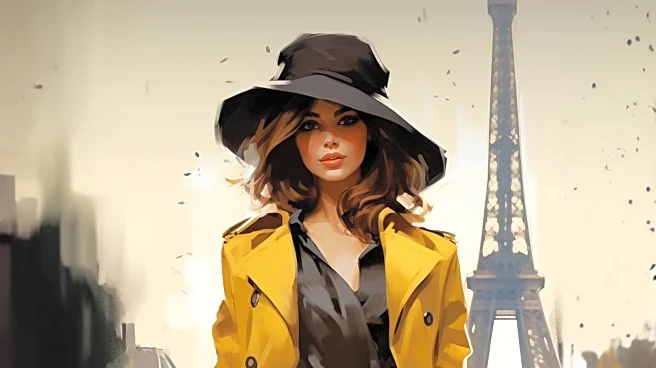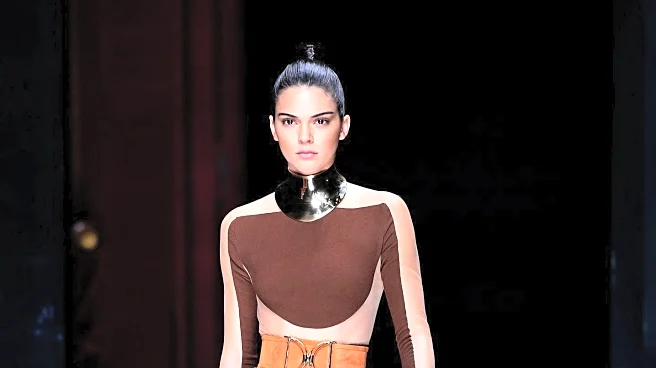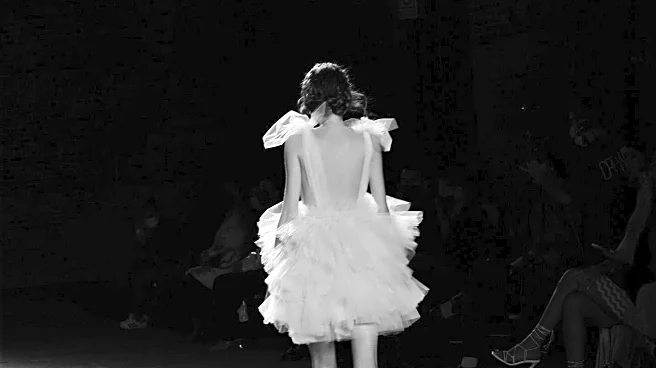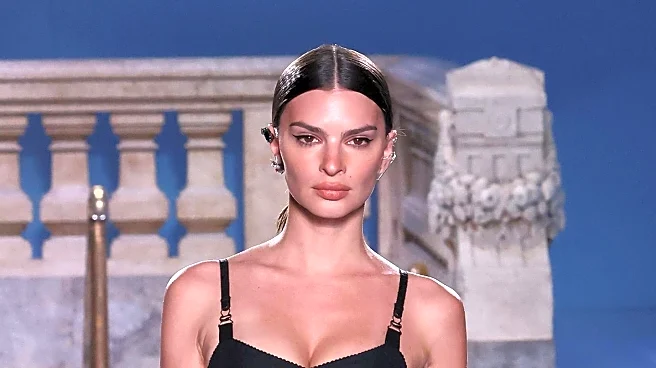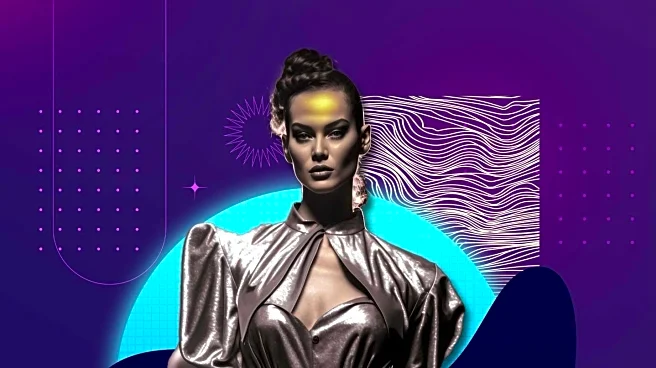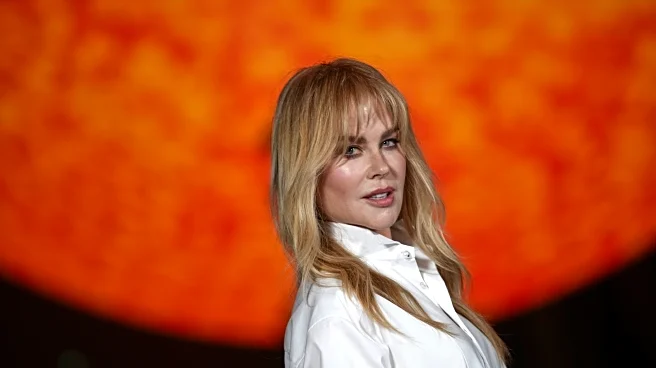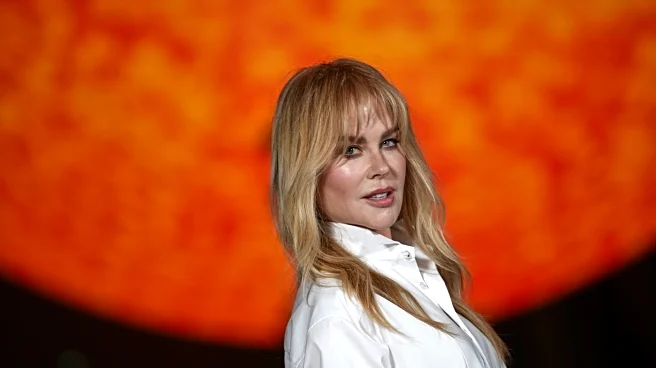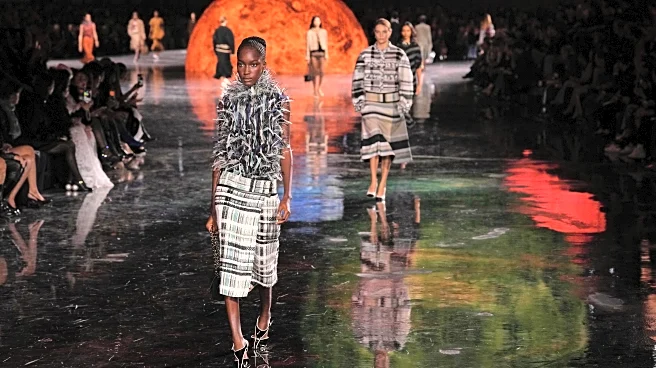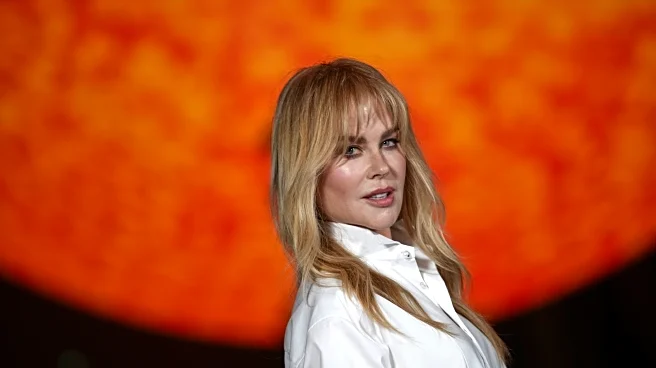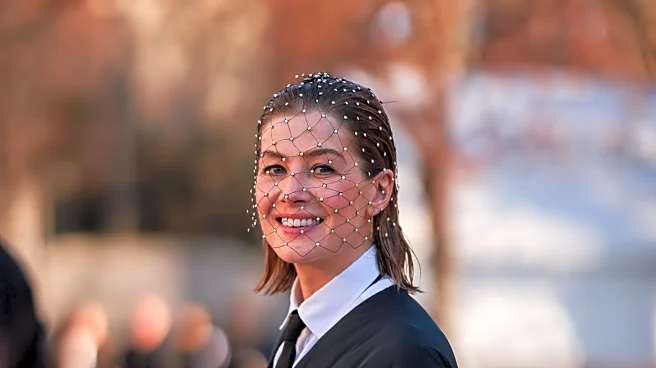What's Happening?
Paris Fashion Week for the women's spring/summer 2026 collections showcased a significant shift towards genderless fashion and creative freedom. Designers like Dario Vitale of Versace embraced bold colors and new directions, while Jonathan Anderson of Dior explored historical and futuristic themes with quirky accessories. Matthieu Blazy's debut at Chanel introduced a fresh language while honoring the brand's heritage. The collections celebrated women's power and sexuality, reflecting a broader trend towards inclusivity and self-expression. Dries Van Noten's collection, led by Julian Klausner, featured 'Hard-Soft' elements with tailored jackets and flowy dresses paired with sneakers, continuing a theme from the men's collection earlier this year. Rick Owens' show provided a spiritual experience, manipulating fabric in innovative ways, while Issey Miyake's designs offered a shield from reality, emphasizing the freedom to defy conventional norms.
Why It's Important?
The emphasis on genderless fashion at Paris Fashion Week highlights a growing trend in the fashion industry towards inclusivity and breaking traditional gender norms. This shift is significant as it reflects broader societal changes, including increased focus on representation and self-expression. The creative freedom displayed by designers suggests a move away from censorship and towards storytelling through fashion, which can influence public perception and cultural attitudes. The celebration of women's power and sexuality in these collections also aligns with current political and social movements advocating for gender equality and bodily autonomy. As fashion often mirrors societal values, these developments could lead to more equitable and ethical practices within the industry.
What's Next?
The trend towards genderless fashion and creative freedom is likely to continue influencing future collections and the fashion industry at large. Designers may increasingly prioritize inclusivity and self-expression, potentially leading to collaborations with diverse voices and communities. As these themes gain traction, fashion brands might adopt more sustainable and ethical practices, responding to consumer demand for transparency and social responsibility. The impact of these changes could extend beyond fashion, affecting related industries such as advertising and media, which may also embrace more inclusive and diverse representations. Stakeholders, including fashion houses and retailers, will need to adapt to these evolving consumer preferences to remain relevant.
Beyond the Headlines
The shift towards genderless fashion and creative freedom at Paris Fashion Week may have deeper implications for cultural and ethical dimensions within the fashion industry. By challenging traditional gender norms, designers are contributing to a broader dialogue about identity and representation. This movement could inspire other industries to reconsider their approaches to inclusivity and diversity, potentially leading to long-term societal shifts. Additionally, the focus on storytelling through fashion may encourage more innovative and experimental designs, pushing the boundaries of conventional aesthetics and construction techniques. As these changes unfold, they could redefine the role of fashion as a medium for cultural expression and social change.

